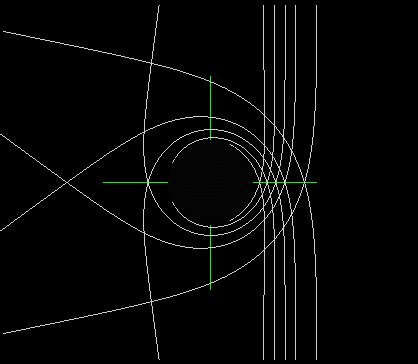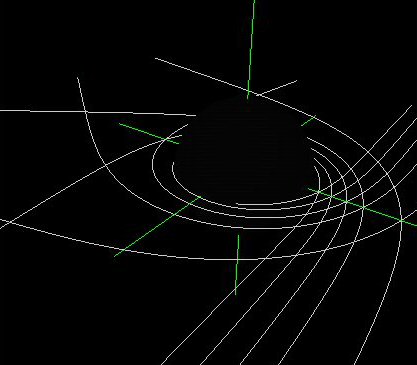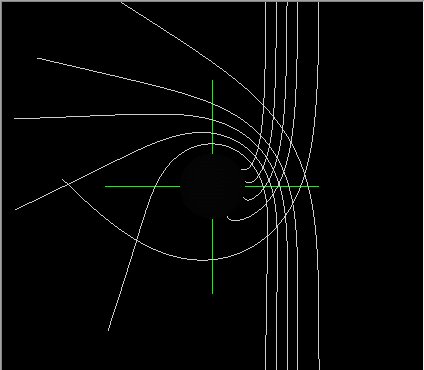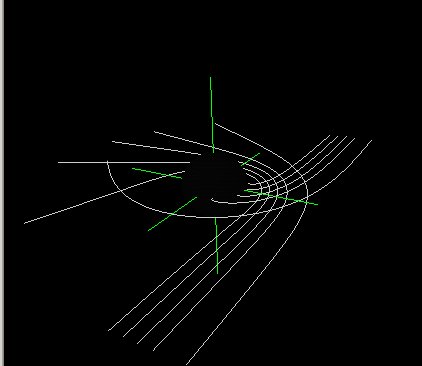|
|
|
|
|
|
|
|
|
Contents
A brief overview of the
Mathematics of Black Holes
will provide you with some formulas concerning the computation of gravitational properties of black holes.
A more detailed discussion of
Black Holes and Singularities
Black HolesUncharged, non-rotating black holes are called Schwarzschild black holes. Uncharged rotating black holes are called Kerr black holes. Non spinning charged black holes are called Reissner-Nordström black holes. Charged, spinning black holes are called Kerr-Newman black holes. The Black Hole No Hair Theorem shows that mass, charge, and angular momentum are the only properties which a black hole can possess.
In 1965, R. Penrose proved the Singularity Theorem which says that a singularity must reside inside every imploding star, and therefore every black hole. In 1969, Lifschitz, Khalatnikov, and Belinsky showed that tidal gravity oscillates chaotically near the singularity. They also found the particular type of singularity, now known as a BKL singularity. Thus, black holes can pulsate, as was recognized by Press (1971). Falling PhotonWhat happens if a beam of light, just say a single photon, happens to pass near by. If it crosses the event horizon it will fall ultimately into the black hole. Just let us take a close look what happens to if a Falling Photon comes near a black hole. Schwarzschild Black Hole


Kerr Black Hole


|